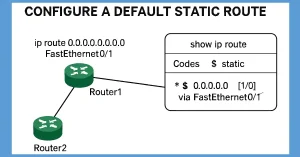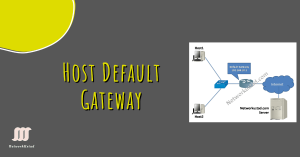How to configure Default Route
A default static route is a route that represents any network, not in the routing table of that router. Routers normally use default routes that are configured locally or learned from another router, using a dynamic routing protocol. A default route is used when there are no other routes that match in the routing table […]


